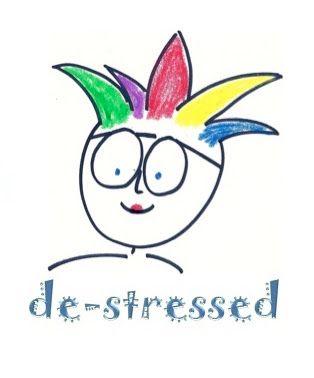Positive Psychology
Wednesday's Child #1
Random Positive Psychology Conversations June 2015
Posted June 17, 2015

I am privileged to enjoy many conversations with students, educators, psychologists, helpers, writers, scholars, practitioners, editors, filmmakers, visionaries, and so many others who understand the promise of positive psychology.
The 3 P's of positive psychology proponents are: Passion, Possibility & Potency. Conversations are always enthusiastic, share endless potencies, and remind me of the power of positive psychology education to thwart less personalized, non-neuroscience-based approaches.
The theme of all the conversations is how to achieve optimal well-being and accomplished learning.
The conversations span all developmental areas, all circumstances, and all ages: babies, toddlers, young children, school-aged children, and adolescents. The conversations often consider the neuroscience of affective learning.
In my new special feature, Wednesday's Child, I will bring some of the conversations to you with the hope that this post will inspire you to continue the conversation. I hope you continue the conversation over coffee in your office, with students in your classroom, at conferences with your peers, on social media with the world....and on websites, and in magazines, newsletters, and academic journals.
Professor J.F., Professor, University of Tasmania: Positive Experience
J.F. and his colleagues are engaged in devising positive psychology interventions for adolescents in the juvenile justice system. Professor J.F. is working on research with the Search Institute to identify the external and internal assets that may predict youth incarceration. Developmental assets research suggests that positive psychology intervention is best understood in the context of both internal and external influences. In my conversation, Professor J.F. also told me that he has found a common denominator of youth with psychological disorders: they cannot easily recall a positive, meaningful experience. When prompted, if they take more than 45 seconds to respond, it is likely they cannot recollect a positive experience at all. 'Indelible' negative experiences dominate the neural pathways. The brain's positive neuronal memory pathways are hijacked by negative experiences. The well-being prescription he is testing: a positive experience that stimulates the positive anticipatory mechanisms in the brain to rebuild that highway and that also involves building a relationship with an important person in your life (positive shared experience).
Thomas Westenholz, Director: Positive Edge Education
What teacher or parent does not want to give their child a 'positive edge' in learning and life? Thomas, an entrepreneur and financial investor, decided that for the sake of his own child, and all children, he needed to use his expertise in technology and finance to bring positive psychology to schools at the macro level. His work aims to bring positive psychology (social-emotional learning) to schools and children all over the world (the 'Kahn' Academy of Positive Psychology). Our conversations center around the potential of technology to explicitly teach emotional strengths like compassion (self and other), courage, and courtesy. We also discuss how neuroscience research confirms the power of observational learning and role model influence. For this reason, Thomas is developing web-based, interactive, dynamic, multi-media, video lessons using heroes and celebrities children admire. I am excited to see his pilot curriculum on mindfulness coming soon.
Emily Klein - Parents and Positive Psychology
Emily is a NYC-based free-lance writer of all things children and learning. We had a wonderful conversaton about how parents can use positive psychology to help their children experience more joy. The conversation quickly morphed into how to decrease childrens' stress and anxiety - as ramped up in schools at every level today - as an inhibitor of learning and joy and well-being. We discussed the deficit model and how it activates the stress mechanisms in development. What my child can't - or won't - do as contrasted to the emotional strength model and how to nurture it with specific parent-child exchanges. We discussed how difficult it is to transcend the instinctual reaction to reward and punish; and how to instead focus on how the brain absorbs affective experience and organizes core learning. We agreed the trend to separate development and learning, and disregard whole integral parts of the child, is counterproductive in learning and parenting. I hope to see Emily's articles in print in many national parenting magazines soon. Parents can learn to use positive psychology in the home, too.
These are just a few of the conversations I had this week with like-minded friends and colleagues. All are committed to organic happiness and accomplished learning through well-being. All are enthusiastic about adopting positive psychology theory, research, and practice as the blueprint for educational change and progress. What have you got to say?
--------------------------
My conversation with Jill Andrews of Ann Arbor MI, artist and doll maker extraordinaire, about all things emotional and meaningful, continues. I use her charming drawings to express better than words can manage - the mind/body connection in teaching and learning. Thanks to Jill for lending me her captivating art.
READ MORE IN MY BOOK: Positive Psychology in the Elementary School Classroom (W.W. Norton & Company, 2013) is intended to help teachers build positive psychology classrooms consistent with affective neuroscience.
FOLLOW ME ON TWITTER: https://twitter.com/pattyogrady/
JOIN ME ON FACEBOOK: https://www.facebook.com/drogrady/
FIND ME ON GOOGLE: https://plus.google.com/+PattyOGrady/
THE POSITIVE PSYCHOLOGY CLASSROOM DAILY: http://www.pattyogrady.com




